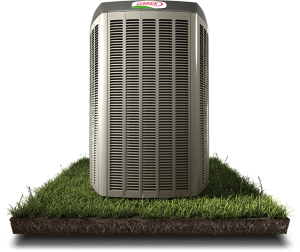
Installing an energy-efficient HVAC system in your home can help you save money on your utility bills while reducing your carbon footprint. Energy-efficient systems are designed to provide the same level of comfort as traditional systems but with significantly lower energy consumption. In this comprehensive guide, we will explore the key factors to consider when installing an energy-efficient HVAC system in your home.
1. Choosing the Right HVAC System
Factors to consider:
- Size of your home: Ensure the HVAC system is appropriately sized for your home to maximize efficiency.
- Energy efficiency rating: Look for systems with high SEER (Seasonal Energy Efficiency Ratio) ratings for optimal energy savings.
- Climate considerations: Consider the climate in your area to choose a system that can efficiently heat and cool your home year-round.
- Budget: Determine your budget and choose a system that offers the best value for long-term energy savings.
2. Proper Installation
Importance of professional installation:
- Proper installation ensures optimal performance and energy efficiency of your HVAC system.
- Professional installers have the expertise to correctly size, install, and set up your system for maximum efficiency.
- Improper installation can lead to decreased efficiency, higher energy bills, and frequent breakdowns.
3. Energy-Efficient Features
Key features to look for:
- Programmable thermostats: Allow you to set temperature schedules and save energy when you are away from home.
- Zoning systems: Control temperatures in different areas of your home independently for increased efficiency.
- Variable-speed technology: Adjusts the speed of the HVAC system to meet the specific heating or cooling demands, saving energy.
- High-efficiency air filters: Improve indoor air quality and reduce energy consumption by keeping the system clean.
4. Regular Maintenance
Benefits of regular maintenance:
- Ensures your HVAC system operates at peak efficiency, saving energy and money.
- Extends the lifespan of your system, reducing the need for costly repairs or replacements.
- Improves indoor air quality by keeping the system clean and free of dust, debris, and allergens.
- Potential energy savings of up to 30% with regular maintenance.
5. Energy-Efficient Upgrades
Options for improving efficiency:
- Insulation upgrades: Proper insulation helps maintain indoor temperatures and reduce energy loss.
- Sealing ductwork: Eliminates leaks and ensures that conditioned air reaches its destination efficiently.
- Upgrading to a smart thermostat: Allows for remote temperature control and energy usage monitoring for increased efficiency.
- Consider renewable energy sources like solar panels to power your HVAC system for even greater savings.
6. Government Rebates and Incentives
Benefits of rebates and incentives:
- Many government programs offer rebates and incentives for installing energy-efficient HVAC systems.
- Save money on your initial investment and reduce the payback period for your new system.
- Check with local utility companies and government agencies for available programs and eligibility requirements.
7. Conclusion
By following this ultimate guide to energy-efficient HVAC installation for your home, you can enjoy a comfortable living environment while saving money on your energy bills and reducing your environmental impact. Choosing the right system, proper installation, incorporating energy-efficient features, regular maintenance, making upgrades, and taking advantage of rebates and incentives are key steps to achieve maximum energy efficiency for your home.
